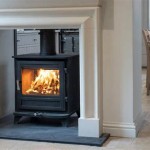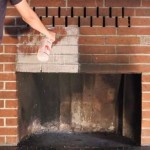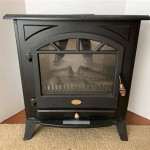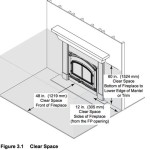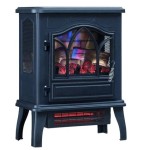Can You Put A Fireplace In A House? Exploring Fireplace Installation Possibilities
The allure of a fireplace, with its crackling warmth and aesthetic appeal, is undeniable. Many homeowners considering renovations or new builds often ponder the question: can you put a fireplace in a house? The answer, while generally affirmative, hinges on several crucial factors, including existing structural elements, local building codes, and the type of fireplace chosen. This article delves into the intricacies of fireplace installation, outlining the considerations necessary to determine feasibility and ensure a safe and functional addition to a home.
Assessing the Existing Structure and Ventilation
Before embarking on any fireplace installation project, a thorough assessment of the existing structure is paramount. This involves evaluating the load-bearing capacity of the floor, the framing of the walls, and the accessibility for running a chimney or venting system. Older homes, in particular, may require reinforcement to support the weight of a traditional masonry fireplace. A structural engineer's assessment is highly recommended to ensure that the building can safely accommodate the added weight and structural modifications.
The availability and feasibility of installing proper ventilation is another critical aspect. Traditional wood-burning fireplaces necessitate a chimney that extends above the roofline to effectively vent smoke and combustion byproducts. If a chimney already exists, its condition must be inspected for integrity and compliance with current safety standards. Cracks, deterioration, or inadequate drafting can pose significant fire hazards. If a chimney doesn't exist, the cost and complexity of building a new one must be factored into the overall project budget and timeline. Alternative venting options, such as direct-vent systems, are available for gas or propane fireplaces, but these still require a pathway for exhaust gases to escape the building.
Consideration should also be given to the proximity of combustible materials. Fireplaces generate significant heat, and proper clearances from wood framing, insulation, and other flammable substances are essential to prevent fire hazards. Local building codes specify minimum clearance requirements, which must be strictly adhered to during installation. Heat shields and other protective measures may be necessary to reduce the risk of fire.
Understanding Fireplace Types and Their Installation Requirements
The type of fireplace chosen significantly impacts the installation process and feasibility. Fireplaces are available in a variety of configurations, each with its own unique installation requirements and venting characteristics.
Traditional masonry fireplaces are the most aesthetically appealing but also the most demanding in terms of installation. They require a substantial foundation, a complex chimney system, and significant construction expertise. The cost of installing a masonry fireplace can be substantial, and the process often involves extensive structural modifications. Due to these factors, they are generally more practical for new construction or major renovations where the structural requirements can be integrated into the design.
Prefabricated fireplaces, also known as factory-built fireplaces, offer a more streamlined and cost-effective alternative to masonry fireplaces. These units are manufactured in a controlled environment and designed for easier installation. They typically consist of a firebox, a chimney system, and decorative facing. Prefabricated fireplaces can be wood-burning, gas, or electric, offering a wider range of fuel options. The installation process is generally less complex than for masonry fireplaces, but it still requires adherence to manufacturer's instructions and local building codes.
Gas fireplaces provide the convenience of instant ignition and adjustable flame control. They can be vented or vent-free, depending on the specific model. Vented gas fireplaces require a chimney or direct-vent system to exhaust combustion gases, while vent-free models burn cleaner and do not require external venting. However, vent-free gas fireplaces have limitations in terms of room size and ventilation requirements, and they may not be permitted in all jurisdictions.
Electric fireplaces are the simplest to install, requiring only a standard electrical outlet. They do not produce real flames or combustion byproducts, making them a safe and convenient option for apartments, condominiums, and other locations where traditional fireplaces are not feasible. Electric fireplaces generate heat using electric resistance coils and often include realistic flame effects. While they provide supplemental heat and visual appeal, they do not offer the same level of warmth or ambiance as wood-burning or gas fireplaces.
Navigating Building Codes, Permits, and Professional Installation
Fireplace installation is subject to strict building codes and regulations designed to ensure safety and prevent fire hazards. These codes vary depending on the location and type of fireplace being installed. Before commencing any work, it is essential to consult with the local building department to obtain the necessary permits and understand the applicable code requirements. Failure to comply with building codes can result in fines, delays, and even the removal of the fireplace.
Permits are typically required for any fireplace installation that involves structural modifications, chimney construction, or gas line connections. The permit application process may involve submitting detailed plans, specifications, and calculations to demonstrate compliance with building codes. Inspections are typically conducted at various stages of the installation process to ensure that the work is being performed according to approved plans and codes.
While some homeowners may be tempted to tackle fireplace installation as a do-it-yourself project, it is generally recommended to hire a qualified professional. Fireplace installation involves complex structural, mechanical, and electrical work, and errors can have serious consequences. A professional installer has the knowledge, experience, and tools necessary to ensure that the fireplace is installed safely and correctly.
When selecting a fireplace installer, it is important to verify their credentials and experience. Look for installers who are licensed, insured, and certified by relevant industry organizations. Obtain multiple quotes from different installers and compare their prices, scope of work, and references. A reputable installer will be able to provide detailed information about the installation process, answer any questions or concerns, and ensure that the fireplace meets all safety standards.
In addition to the physical installation, factors related to fuel source must also be considered. If a gas fireplace is chosen, a qualified gas fitter is required to manage the gas line connections. They will ensure that the gas lines are properly sized, installed, and leak-tested to prevent gas leaks and explosions. Similarly, for wood-burning fireplaces, it is important to select a reliable source of seasoned firewood. Burning unseasoned wood can produce excessive smoke and creosote buildup, increasing the risk of chimney fires.
Finally, it is important to remember the ongoing maintenance that a fireplace requires. Chimneys should be inspected and cleaned regularly to remove creosote buildup and prevent chimney fires. Gas fireplaces should be serviced annually to ensure proper operation and prevent gas leaks. Failing to maintain a fireplace can lead to safety hazards and reduced efficiency.

Adding A Fireplace To Existing Home Where For Fireplaces

How To Use A Fireplace Bob Vila

How To Add A New Electric Fireplace Your Home

Your Home Doesn T Have A Fireplace And You Want To Add One

Adding A Gas Fireplace To An Existing Home Just Log Fires

Fireplace Additions Answers On

Pros And Cons Of A House With Fireplace Rismedia

How To Add A New Electric Fireplace Your Home

Top 5 Reasons To Install A Fireplace In Your Home Stone Solutions Maine

Install A Fireplace Without Chimney Ventless
Related Posts

